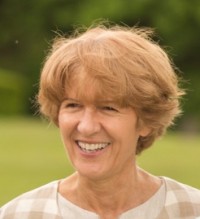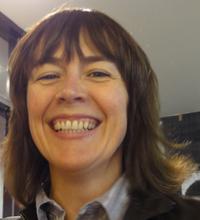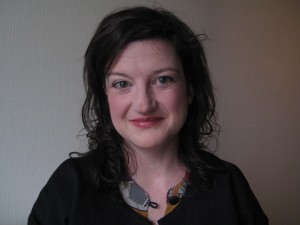Keynote Speakers
Usman Haque
Founding Partner Umbrellium and Thingful
Who Designs, Who Decides?
Decision-making and design are central to everyday public life, but it’s important to understand how definitions of efficiency, optimisation, etc, – that often underpin such processes – help determine how and why things are implemented, and where and with whom power concentrates. The questions of who designs and who decides are crucial to structuring participation, especially in networked urban environments. This talk will discuss these issues in the context of some of Usman’s work in participatory systems.
Bio: Usman Haque is founding partner of Umbrellium and Thingful, a search engine for the Internet of Things. Earlier, he launched the Internet of Things data infrastructure and community platform Pachube.com, which was acquired by LogMeIn in 2011. Trained as an architect, he has created responsive environments, interactive installations, digital interface devices and dozens of mass-participation initiatives throughout the world. His skills include the design and engineering of both physical spaces and the software and systems that bring them to life. He has taught at the Bartlett School of Architecture, including the Interactive Architecture Workshop (until 2005) and is currently co-teaching RC12 Urban Design cluster, “Participatory Systems for Networked Urban Environments”. He received the Design of the Year Award (interactive) from the Design Museum, UK in 2008, the World Technology Award (art) in 2009, the Japan Media Arts Festival Excellence prize and the Asia Digital Art Award Grand Prize.
Professor Jane Rendell
The Bartlett School of Architecture, Faculty of the Built Environment, University College London
Spaces of Relation: Feminist Critical Spatial Practice
This talk focuses on one of feminism’s key concerns – the spaces of relation between subjects, and engages with what became a banner for second wave feminism – ‘the personal is political’ – and the need for public politics to engage with issues of private life – for the spaces between subjects in the setting of home and family to be understood as cultural formations and in relation to work. This was developed by radical feminists in the 1970s either by considering the so-called private space of women and home, such as WomanHouse, 1971-2, developed out of the feminist art programme at CalArts, with artists Judy Chicago, Miriam Shapiro and others, and by engaging with the difficulties women, especially mothers with young children, had in traversing public cityscapes, as in the practice of the feminist architectural cooperative Matrix in the late 1980s and early 1990s. The 1990s brought a period of theoretical reflection and the establishment of gender studies in the academy, and many key edited collections on gender and space, contributing post-structuralist concerns with the construction of the subject and representational/semiotic systems to challenge the dominance of disciplinary thinking and dominant power structures be they the professional settings of gallery-based art or the built environment professions. The terrain of inter- and trans-disciplinarity has reconfigured the relation between theory and practice, and between practices themselves. I have used the term ‘critical spatial practice’ (2002/6) to describe both everyday activities and creative practices which seek to resist the dominant social order of global corporate capitalism. And in my Site-Writing book (2010) I talk of the need to bridge inner concerns and outer imperatives, of how intimate voices can speak of broader political concerns. My talk will end with the beginnings of a new project, where I develop the techniques of site-writing in relation to ‘home’ and ‘work’ as sites of research production through practices of institutional and self-critique.
Bio: Professor Jane Rendell (BA, DipArch, MSc, PhD) is an academic and writer. She trained and practiced as an architectural designer, before studying for her MSc and then PhD in feminist architectural history. Her interdisciplinary work, through which she has developed ‘critical spatial practice’ (2002/6) and ‘site-writing’ (2005/10) crosses architecture, art, feminism, history and psychoanalysis. Her books include Spaces of Transition: The Architecture of Psychoanalysis (2016), Site-Writing (2010), Art and Architecture (2006), and The Pursuit of Pleasure (2002), and co-edited collections like Pattern (2007), Critical Architecture (2007), Spatial Imagination (2005), The Unknown City (2001), Intersections (2000), Gender, Space, Architecture (1999) and Strangely Familiar (1995). She is Professor of Architecture and Art at the Bartlett, UCL.
Professor Susannah Hagan

Faculty of Architecture and the Built Environment, University of Westminster
Another Way of Seeing: Public Space, Public Spaces, and the Architect
Any analysis of ‘public space’ should, but rarely does, pay as much attention to the ‘space’ in public space as the ‘public’. Over the past two decades, there has been a growing anxiety, first in academic discourse, and now in the popular media, over the privatisation or corporatisation of public space – digital as well as material. From both the left and the right, there are elegies for the “end of public space” (Michael Sorkin). This narrative is and has been for generations, dominated by social and political scientists and theorists, from Henri Lefebvre to Chantal Mouffe to Richard Sennett, and they have produced seminal work, united by an assumption that ‘public’ and ‘public space’ refer to certain political, social and spatial conditions we once enjoyed, but which are now being eroded, an erosion that represents a loss of both civil liberties and a traditional cosmopolitan urbanity.
The minute one shifts, however, from considering a conceptual ‘public space’ to considering the particularities of material ‘public spaces’, then generalisations about “the end of public space” become much more problematic, as public spaces are both temporally and culturally various, and what can be said of some public spaces cannot be said of others. The minute one shifts to considering public spaces, in the sense of intentional urban civic spaces, then the role of the designer become revelatory, as s/he serves as a lightning rod, not only for the idea worlds of architecture, but also for the values and priorities of client and society.
Examining the role of the architect in the production of public spaces suggests that the current anxiety about the ownership of public space is much less relevant than their management – and their design.
Bio: Before her appointment at the University of Westminster as Professor of Architecture, Susannah Hagan was Professor of Architectural Research at the School of Architecture, Royal College of Art from 2012-2016, leading the research cluster PS2 (Public Space ProjectS). Trained as an architect at Columbia University, New York and the Architectural Association, London, she is the founder and director of R_E_D (Research into Environment + Design), a European design research consultancy that specialises in promoting the role of design in making cities more environmentally resilient. She is on the editorial boards of Architectural Research Quarterly and The Architectural Review, and is a member of the AHRC Peer Review College. She has published extensively on both architecture and urban design, drawing together history, theory, design practice and environmental practice, e.g. Taking Shape: a new contract between architecture and nature (2001), and Digitalia: architecture and the environmental, the digital and the avant-garde (2008). Her latest book, Ecological Urbanism: the nature of the city (2015) is for students and practitioners, and examines the role of urban design in the environmental recalibration of cities. She currently leads an AHRC/FAPESP-funded Anglo-Brazilian research project – Public Spaces and the Role of the Architect in London and São Paulo – studying design and designers in the production of Modernist and contemporary public spaces in these cities.
Professor Ramia Mazé
Konstfack University College of Arts Crafts and Design
Mediations (and Politics) of Design Agency
‘Design agency’ is a key issue formulated in the conference theme “Mediations – art & design agency and participation in public space”. Here, I take up the issue of agency, particularly concerning the political dimensions of design and of the public projects advanced through the TRADERS program. In Europe over the last decades, government has moved away from top-down policy-making to more ‘grounded’, ‘interactive’ and ‘participatory’ forms of governance. Design has expanded within a political economy in which previously governmental social policies and welfare services are redistributed to communities, individuals, companies, and NGOs. Within this profound societal shift, both governance and design are taking more and diffuse forms in everyday life. Designers are increasingly in demand within the public sector projects even as, some argue, “everyone designs”. How can we understand design agency today? What are some of the political consequences and possibilities of design?
In this talk, I will discuss such questions in regards to forms of design mediation. A historically defining form of design mediation has been that of drawing (or ‘designo’, for which the discipline was named during the Italian Renaissance). Mediating, technically, between design conception and production, drawing also has a role in mediating politically. A history of design agency might be traced through drawings, maps, and visualizations manifesting critical and utopic impulses or exploring radical social programs and societal forms. Today, forms and techniques of design mediation have expanded and diffused, but what of agency in political imaginaries? To explore this, I will point at ‘Who Builds Your Architecture’, ‘In.Formal Academy’ and other participatory design projects as potential examples of “embodied utopias”. In such projects, various designed mediations are part of larger projects of public debate and pedagogy, in which changing ideas and forms of governance are at stake. Perhaps one way of understanding design agency today is through articulating particular (and political) forms of mediation.
Bio: Ramia Mazé is Professor of New Frontiers in Design at Aalto University where she pursues a programmatic vision in “Designing Our Common Future”. As a researcher, educator and designer, Ramia specializes in critical and participatory approaches to design for systems and products that alter social practices and public life. While design is traditionally formulated in relation to industry, her work explores the expansion of design roles in society.
Until recently in Sweden, she was Adjunct Professor in Design at Konstfack University College of Arts Crafts and Design, teacher at KTH Royal Institute of Technology in the Sustainable Urban Planning and Design program, and international secretariat for the Swedish PhD school Designfakulteten. Until 2013 at the Interactive Institute in Sweden, she directed, secured funding, and managed over 6 major interdisciplinary and international practice-based research projects. She is an expert on artistic- and design-led research, and she is committed to building quality, criticality and diversity within the design research community. She has published widely in reputed academic arenas and her work has been widely exhibited. She also works as a professional designer and architect. She has earned degrees including Docent/Associate Professor and PhD in Interaction Design (Malmö University SE), MA in Computer Related Design (Royal College of Art UK), BA in Architecture (Columbia University US).





